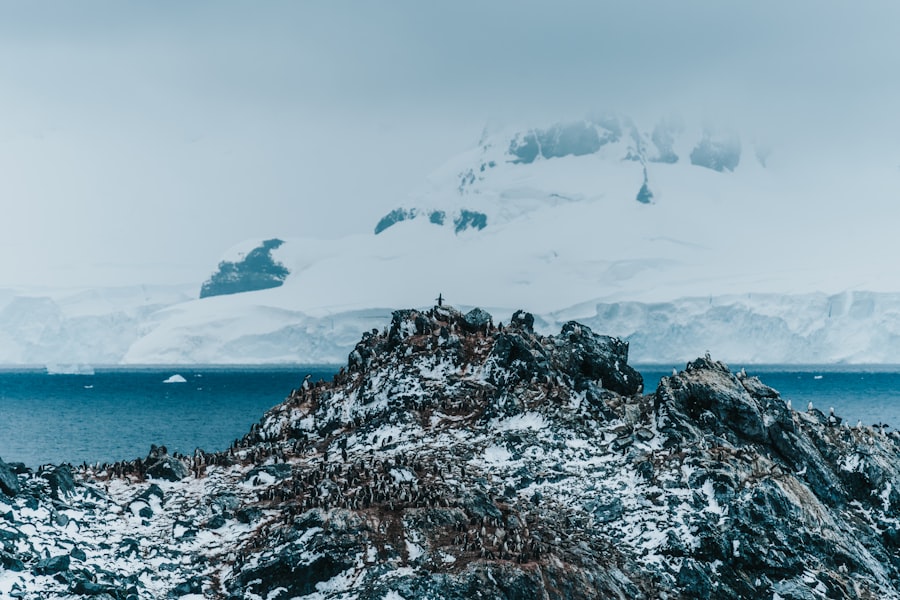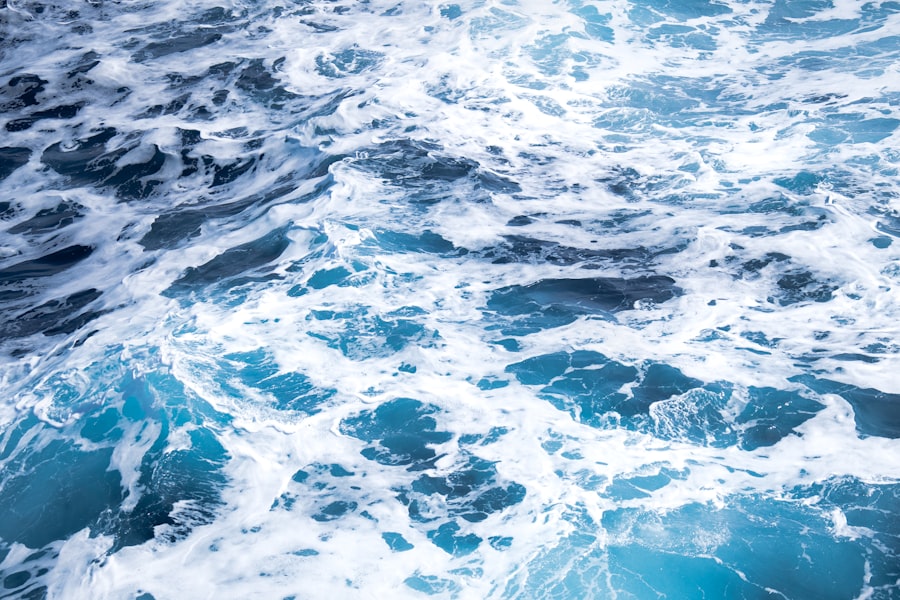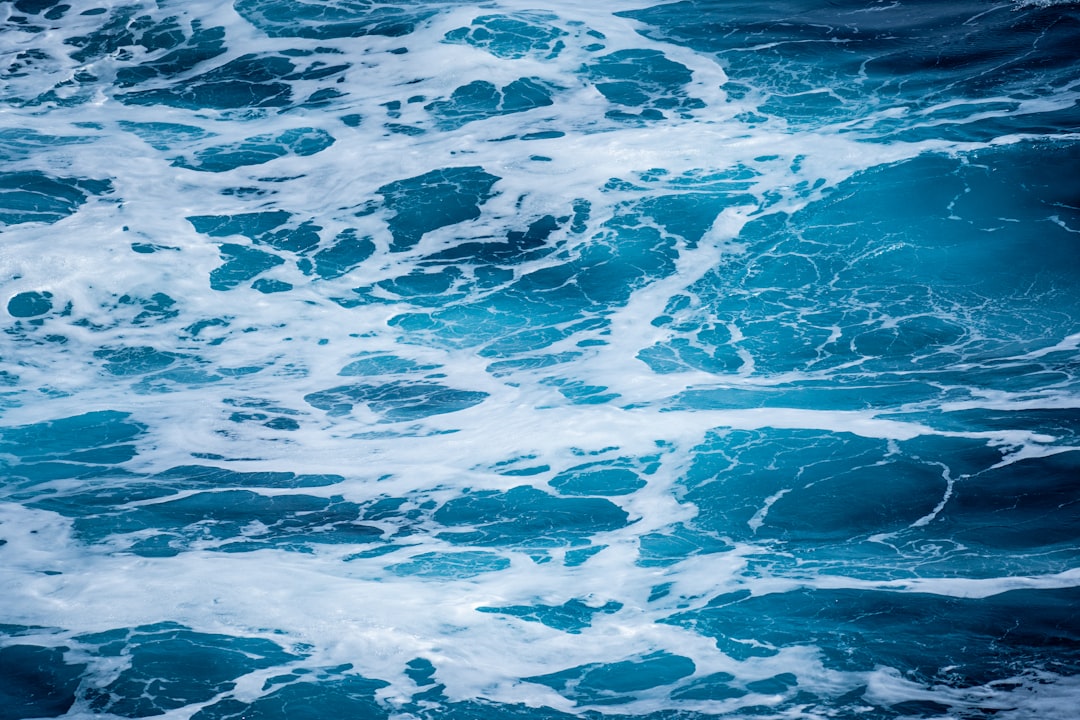The Drake Passage, a body of water that separates South America from Antarctica, has a rich and storied history that dates back centuries. Named after the English explorer Sir Francis Drake, who was the first to navigate these treacherous waters in the late 16th century, the passage has long been a focal point for explorers, scientists, and adventurers alike. Drake’s journey was not merely a quest for discovery; it was also a pursuit of wealth and glory during the age of exploration.
His successful navigation through the passage opened up new routes for trade and exploration, paving the way for future expeditions to the southernmost continent. Over the years, the Drake Passage has become synonymous with both adventure and peril. The waters are notorious for their unpredictable weather patterns and rough seas, which have challenged even the most seasoned mariners.
The passage has witnessed countless shipwrecks and near-misses, making it a place of both fascination and fear. As maritime technology advanced, so too did the understanding of the Drake Passage’s unique characteristics. Today, it serves not only as a vital route for research vessels and cruise ships but also as a reminder of humanity’s enduring spirit of exploration.
Key Takeaways
- The Drake Passage has a rich history of exploration and discovery, with its name honoring the famous explorer Sir Francis Drake.
- Navigating the Drake Passage presents numerous challenges, including unpredictable weather, strong winds, and rough seas.
- Sailing with an experienced captain like Captain Drake is crucial for a safe and successful crossing of the Drake Passage.
- Safety precautions such as wearing appropriate gear, securing belongings, and following the captain’s instructions are essential for crossing the Drake Passage.
- Crossing the Drake Passage offers opportunities to witness diverse wildlife and breathtaking scenery, including whales, seabirds, and icebergs.
Understanding the Challenges of Navigating the Drake Passage
Navigating the Drake Passage is no small feat, as it presents a myriad of challenges that can test even the most experienced sailors. The passage is known for its strong currents and unpredictable weather, which can change rapidly from calm to chaotic in a matter of hours. The convergence of the Atlantic and Pacific Oceans creates a unique environment where waves can reach staggering heights, making it essential for vessels to be well-equipped and prepared for anything.
Mariners must be vigilant and adaptable, as conditions can shift dramatically without warning. Moreover, the passage is often characterized by its isolation. With few safe harbors along its route, any vessel caught in a storm may find itself in a precarious situation.
This isolation adds an additional layer of complexity to navigation, as sailors must rely on their skills and instincts to guide them through these challenging waters. Understanding the intricacies of the Drake Passage is crucial for anyone attempting to cross it, as even minor miscalculations can lead to dire consequences.
The Importance of Sailing with Experienced Captain Drake

When embarking on a journey across the Drake Passage, sailing with an experienced captain is paramount. A seasoned captain brings invaluable knowledge of the passage’s unique challenges and intricacies, having navigated its waters numerous times. Their expertise allows them to make informed decisions regarding route selection, weather patterns, and safety measures.
An experienced captain can anticipate potential hazards and adjust course accordingly, ensuring a safer passage for all on board. Furthermore, an experienced captain fosters a sense of confidence among crew members and passengers alike. Their calm demeanor in the face of adversity can be reassuring during turbulent moments at sea.
A captain who understands the nuances of the Drake Passage can also provide insightful commentary on the surrounding environment, enriching the journey with stories of past explorers and the natural wonders that lie ahead. In essence, sailing with an experienced captain transforms what could be a daunting experience into an exhilarating adventure.
Safety Precautions for Crossing the Drake Passage
| Safety Precautions | Description |
|---|---|
| Life Jackets | All passengers are required to wear life jackets during the crossing. |
| Emergency Drills | Crew members conduct emergency drills to prepare passengers for potential emergencies. |
| Weather Monitoring | The crew closely monitors weather conditions to ensure safe passage. |
| Experienced Crew | The ship is staffed with experienced crew members trained in safety procedures. |
Safety should always be a top priority when crossing the Drake Passage. Mariners must take several precautions to ensure a secure journey through these unpredictable waters. First and foremost, thorough preparation is essential.
This includes conducting regular safety drills, ensuring that all safety equipment is in working order, and familiarizing everyone on board with emergency procedures. Life jackets, flares, and first aid kits should be readily accessible, as well as communication devices to maintain contact with other vessels or shore stations. In addition to equipment checks, monitoring weather conditions is crucial for safe navigation.
Experienced captains often rely on advanced meteorological tools to track storms and changing sea conditions. By staying informed about potential hazards, they can make timely decisions to alter course or delay departure if necessary. Furthermore, maintaining open lines of communication among crew members fosters a culture of safety awareness, allowing everyone to remain vigilant and prepared for any challenges that may arise during the crossing.
Wildlife and Scenery to Look Out for During the Crossing
One of the most captivating aspects of crossing the Drake Passage is the opportunity to witness its diverse wildlife and stunning scenery. The waters are teeming with life, offering glimpses of various marine species that thrive in this unique ecosystem. Passengers may spot playful dolphins riding the bow waves or majestic whales breaching in the distance.
Seabirds such as albatrosses and petrels often accompany vessels on their journey, gliding gracefully above the waves in search of food. In addition to its rich marine life, the scenery surrounding the Drake Passage is nothing short of breathtaking. Towering icebergs drift serenely through the water, their brilliant blue hues contrasting sharply with the deep ocean depths.
The rugged coastline of Antarctica looms on the horizon, inviting explorers to marvel at its untouched beauty. For many travelers, these moments spent observing wildlife and soaking in the stunning vistas become some of the most cherished memories of their journey across this remarkable passage.
Tips for Dealing with Potential Seasickness

Seasickness is a common concern for those embarking on a journey across the Drake Passage, given its reputation for rough seas. However, there are several strategies that travelers can employ to mitigate its effects. First and foremost, choosing a cabin located in the middle of the vessel can help minimize motion discomfort.
This area tends to experience less swaying compared to cabins located at either end of the ship. Additionally, staying hydrated and consuming light meals can aid in preventing seasickness.
Many travelers also find relief through over-the-counter medications or natural remedies such as ginger or acupressure wristbands. Engaging in light physical activity on deck can also help distract from feelings of queasiness while allowing individuals to acclimate to the ship’s movement.
The Best Time of Year to Cross the Drake Passage
Timing is crucial when planning a crossing of the Drake Passage. The best time to embark on this journey typically falls between late November and early March when conditions are generally more favorable. During these months, summer reigns in Antarctica, bringing milder temperatures and calmer seas compared to other times of year.
This period also coincides with peak wildlife activity, providing travelers with ample opportunities to observe seals, penguins, and various seabirds. However, even during this optimal window, weather conditions can still be unpredictable. It is essential for travelers to remain flexible with their plans and be prepared for potential delays or changes in itinerary due to adverse weather conditions.
By choosing to cross during this prime season while remaining adaptable to nature’s whims, adventurers can maximize their chances of enjoying a smooth passage across one of the world’s most iconic waterways.
How to Prepare for the Journey with Captain Drake
Preparation is key when embarking on a journey across the Drake Passage with Captain Drake at the helm. Travelers should begin by researching what to expect during their crossing and familiarizing themselves with essential gear and clothing suitable for varying weather conditions. Layering clothing is advisable, as temperatures can fluctuate dramatically throughout the day.
Waterproof outerwear and sturdy footwear are also recommended to ensure comfort while exploring both onboard and during land excursions. In addition to packing appropriate clothing, travelers should consider their physical readiness for this adventure. Engaging in regular exercise leading up to departure can help build stamina and resilience against potential seasickness or fatigue during long days at sea.
Furthermore, participants should take time to review safety protocols provided by Captain Drake’s crew before setting sail; understanding emergency procedures will foster confidence among passengers while enhancing overall safety during their journey.
What to Expect from the Weather and Sea Conditions
The weather and sea conditions in the Drake Passage are notoriously unpredictable, making it essential for travelers to remain informed about what lies ahead during their crossing. Conditions can vary significantly from day to day or even hour to hour; sunny skies may quickly give way to stormy weather characterized by high winds and towering waves. As such, it is crucial for adventurers to stay updated on forecasts provided by experienced crew members who monitor changing conditions closely.
Travelers should also be prepared for temperature fluctuations throughout their journey across this dynamic waterway. While summer months may offer milder temperatures compared to winter months, wind chill can still make it feel much colder than expected—especially when out on deck observing wildlife or taking photographs. By remaining adaptable and equipped with appropriate gear, adventurers can fully embrace whatever weather conditions they encounter while crossing this remarkable passage.
The Unique Experience of Crossing the Drake Passage
Crossing the Drake Passage is an experience unlike any other—a rite of passage for many adventurers seeking to explore Antarctica’s pristine wilderness. The thrill of navigating these challenging waters evokes a sense of camaraderie among passengers as they share in both excitement and trepidation during their journey together. Each wave that crashes against the hull serves as a reminder of nature’s raw power while simultaneously igniting a sense of wonder about what lies beyond.
Moreover, this crossing offers travelers an opportunity for introspection as they traverse one of Earth’s last frontiers—a place where few have ventured before them. The isolation felt amidst vast ocean expanses encourages reflection on humanity’s relationship with nature while fostering appreciation for our planet’s beauty and fragility. For many who undertake this journey with Captain Drake at their side, crossing the Drake Passage becomes not just an adventure but also a transformative experience that leaves lasting impressions long after they return home.
Making the Most of Your Time on the Other Side of the Passage
Once travelers successfully navigate through the Drake Passage and arrive at their destination—Antarctica—they are greeted by an otherworldly landscape that promises unforgettable experiences ahead. From breathtaking glaciers to unique wildlife encounters, there is no shortage of activities awaiting those who venture into this remote region.
Additionally, opportunities abound for photography enthusiasts eager to capture stunning vistas or candid moments with wildlife such as penguins waddling along icy shores or seals basking in sunlight atop floating icebergs. Engaging with knowledgeable guides enhances these experiences further by providing insights into local ecology while fostering appreciation for conservation efforts aimed at protecting this pristine environment. In conclusion, crossing the Drake Passage represents not only an adventure filled with challenges but also an opportunity for personal growth and connection with nature’s wonders—an experience that will resonate long after travelers return from their journey into one of Earth’s last great frontiers.
The Drake Passage, a significant body of water connecting the Atlantic and Pacific Oceans, is renowned for its challenging navigation conditions and rich marine biodiversity. For those interested in exploring more about the geographical and historical significance of this region, a related article can be found on MyGeoQuest. This article delves into the unique features and the importance of the Drake Passage in global oceanic circulation. To read more, visit the related article on MyGeoQuest.
WATCH NOW! Drake Passage: Earth’s Deadliest Waters Revealed
FAQs
What is the Drake Passage?
The Drake Passage is a body of water located between the southern tip of South America (Cape Horn) and the South Shetland Islands of Antarctica. It connects the southwestern part of the Atlantic Ocean with the southeastern part of the Pacific Ocean.
Why is the Drake Passage significant?
The Drake Passage is known for its rough seas and strong winds, making it one of the most challenging and unpredictable waterways for sailors and explorers. It is also an important oceanographic region due to the Antarctic Circumpolar Current, which flows through the passage and plays a crucial role in global ocean circulation.
How did the Drake Passage get its name?
The Drake Passage is named after the English explorer Sir Francis Drake, who is believed to have been the first European to navigate the waters of the passage in 1578.
What is the wildlife like in the Drake Passage?
The Drake Passage is home to a diverse range of marine wildlife, including various species of whales, seals, and seabirds. It is also a popular area for birdwatching and whale-watching expeditions.
What is the weather like in the Drake Passage?
The weather in the Drake Passage is characterized by strong winds, high waves, and rapidly changing conditions. It is known for its stormy and unpredictable nature, with the potential for extreme weather events.
Are there any human settlements in the Drake Passage?
There are no permanent human settlements in the Drake Passage, as it is primarily a transit route for ships and scientific research vessels traveling to and from Antarctica. However, there are research stations and temporary camps on the nearby Antarctic continent.
